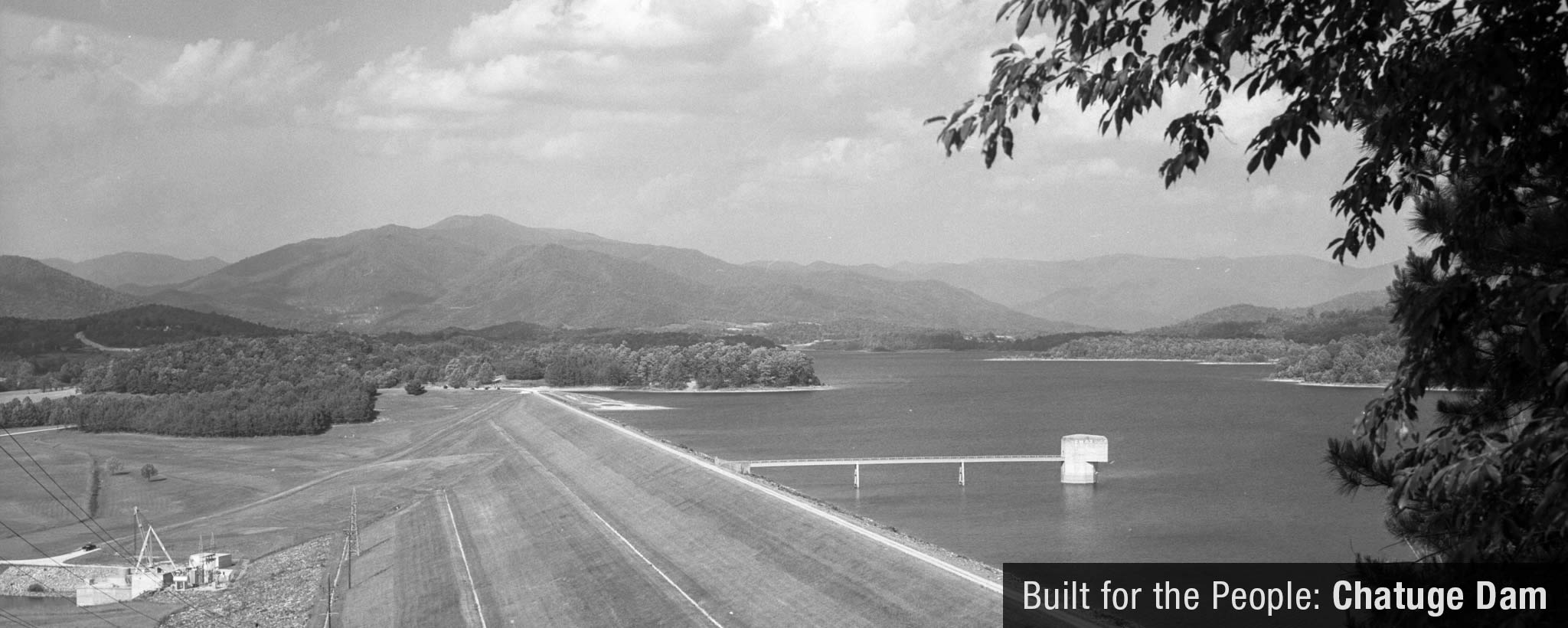
A Dam for All Seasons
Operated initially solely to strengthen flows for war-time power production at Hiwassee and other dams downstream, Chatuge later came into its own as a power producer, multiple-purpose reservoir and picturesque recreation area.
The story of Chatuge Dam—like other TVA dams constructed in the 1940s—is tied to World War II. As told by the TVA engineers who designed the project, “it is the story of the dependence of military preparedness upon aircraft, of aircraft upon aluminum, and of aluminum upon electric power.”
But with Chatuge, there’s a twist to the tale.
Of Machines and Men
Chatuge Dam was not a hydroelectric power project; it was a reservoir storage project. It was designed and built to hold water so that it could be released as needed to increase power generation at downstream projects—most notably, at Hiwassee Dam.
The beauty of the plan—devised in 1941—was that Chatuge could provide a substantial block of power to the TVA system without the delay involved in manufacturing and installing complicated generating equipment. But there was a catch: To realize this advantage, the new dam had to be completed in time to capture the upcoming winter and spring rains—just six months away.
Congress approved the Chatuge project (along with three other Hiwassee projects) on July 16, 1941, and the race was on. Construction work started the following day, with three shifts working 6 to 7 days a week from then on. By January 1942, Chatuge Dam was completed. By fall of that year, the reservoir was filled.
On a more human note: After completing the dam on an emergency schedule, TVA engineers delayed closing the gates for nearly three weeks due to the serious illness of a farmer who lived in the area to be flooded. According to newspaper reports, TVA built a special road to this gentleman’s isolated home “so smooth that not even one jar of the ambulance jolted [him]” when he was finally moved to his son’s house, a half-mile away.
Peacetime Operations
Chatuge was operated on an emergency basis for the single purpose of power production as long as was needed to meet World War II power demands. But, as part of TVA’s plan for the Unified Development of the Tennessee River, it was built to provide other benefits as well. When World War II came to an end, TVA switched to operating Chatuge on a “multi-purpose basis.”
Beginning in 1945, TVA’s river schedulers began factoring other considerations into water release schedules previously developed for the sole purpose of keeping downstream turbines spinning. These included providing releases to help maintain a nine-foot navigation channel on the main Tennessee River and to protect downstream water quality, as well as restricting releases to reduce downstream flood crests and to fill Chatuge reservoir to summer recreation levels.
Producing clean, affordable hydroelectric power remained a priority, however, and in 1954 a small generator was added to the dam to take maximum advantage of the high rainfall that normally graces the mountainous area’s slopes.
Recreation Destination
The engineers who planned Chatuge Reservoir recognized its recreational potential from the start. Chatuge, they wrote in a technical report documenting the dam’s early planning, “has the advantages of settings, location and accessibility of shoreline ranking it as unique among reservoirs of the TVA system.” They also ventured to predict that “the nearby towns of Hayesville, N.C., and Hiawassee, Ga., should eventually profit from a tourist industry of some consequence.”
They were right.
Clay Count, N.C., leased a tract of land for a public park in 1944, and recreational use of the reservoir has steadily increased since that time. The draw: breathtaking views of forested mountaintops, excellent fishing and an abundance of recreation options, including walking paths, bike trails, and picnic and swimming areas.
“Chatuge Dam was built for the people, and the people feel a connection to it,” says Mike Richards, TVA plant manager. “The dam reservation gets a lot of public use, especially the walking path over the dam. The public is invested in the dam; they keep an eye out for it.”
